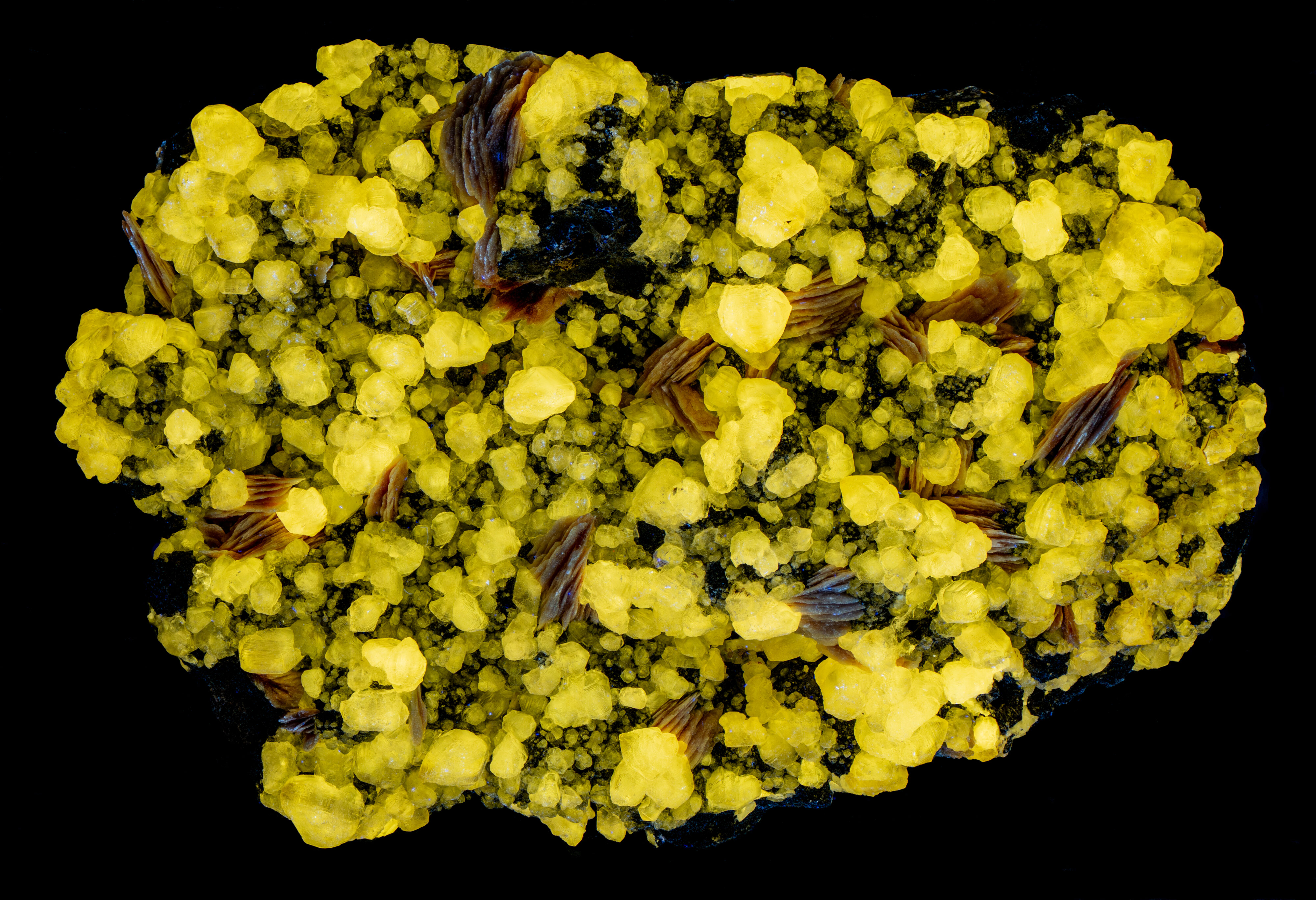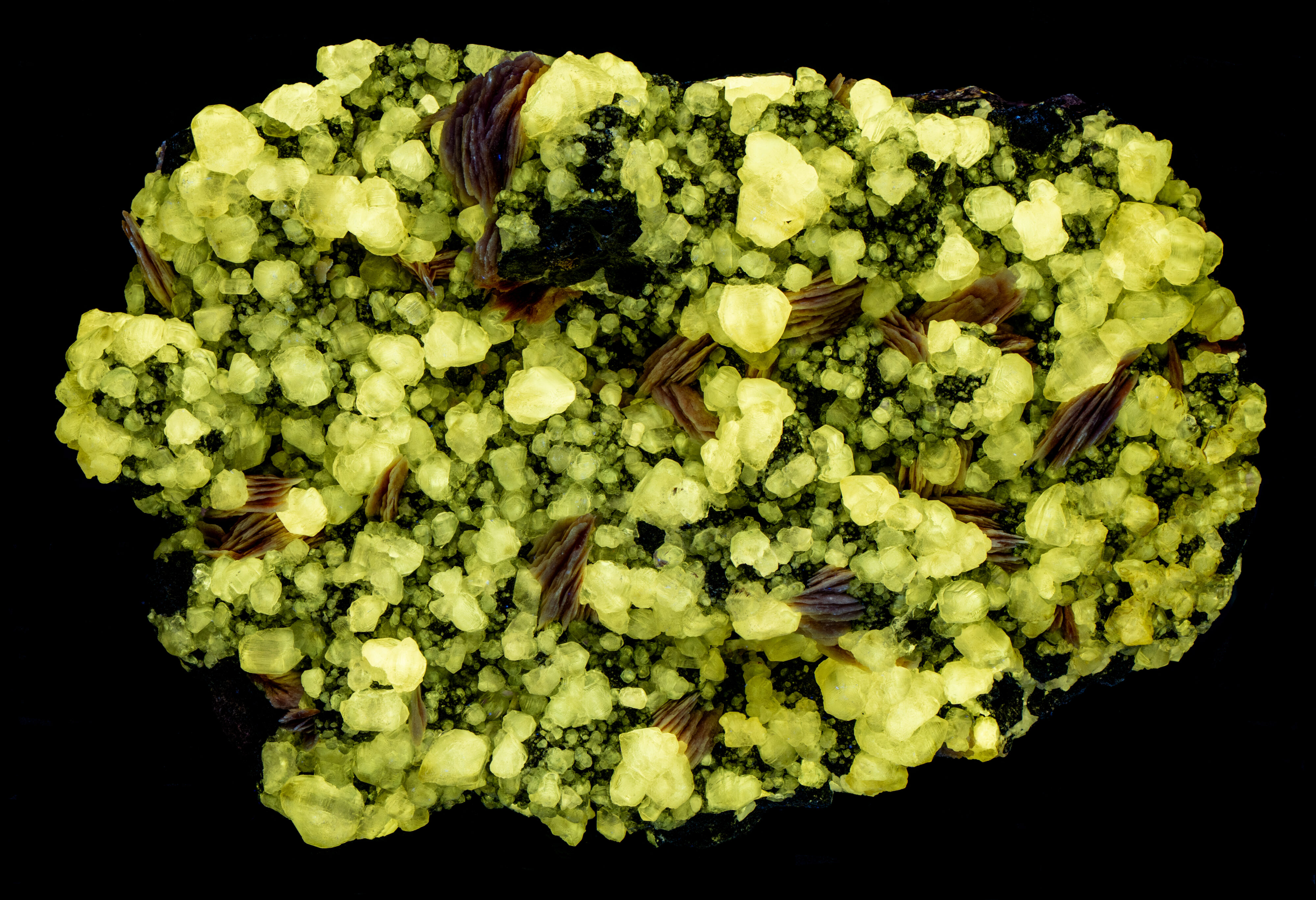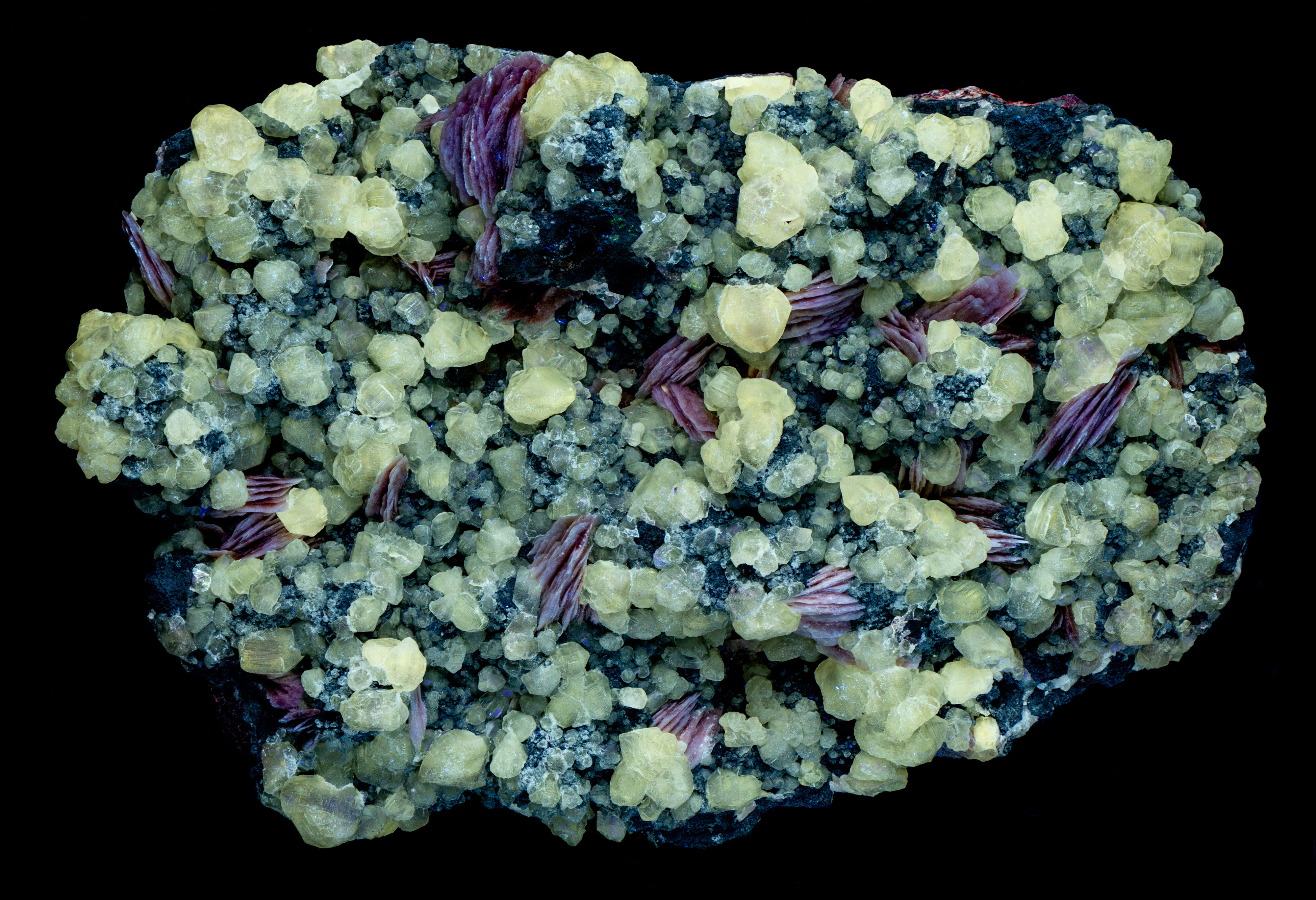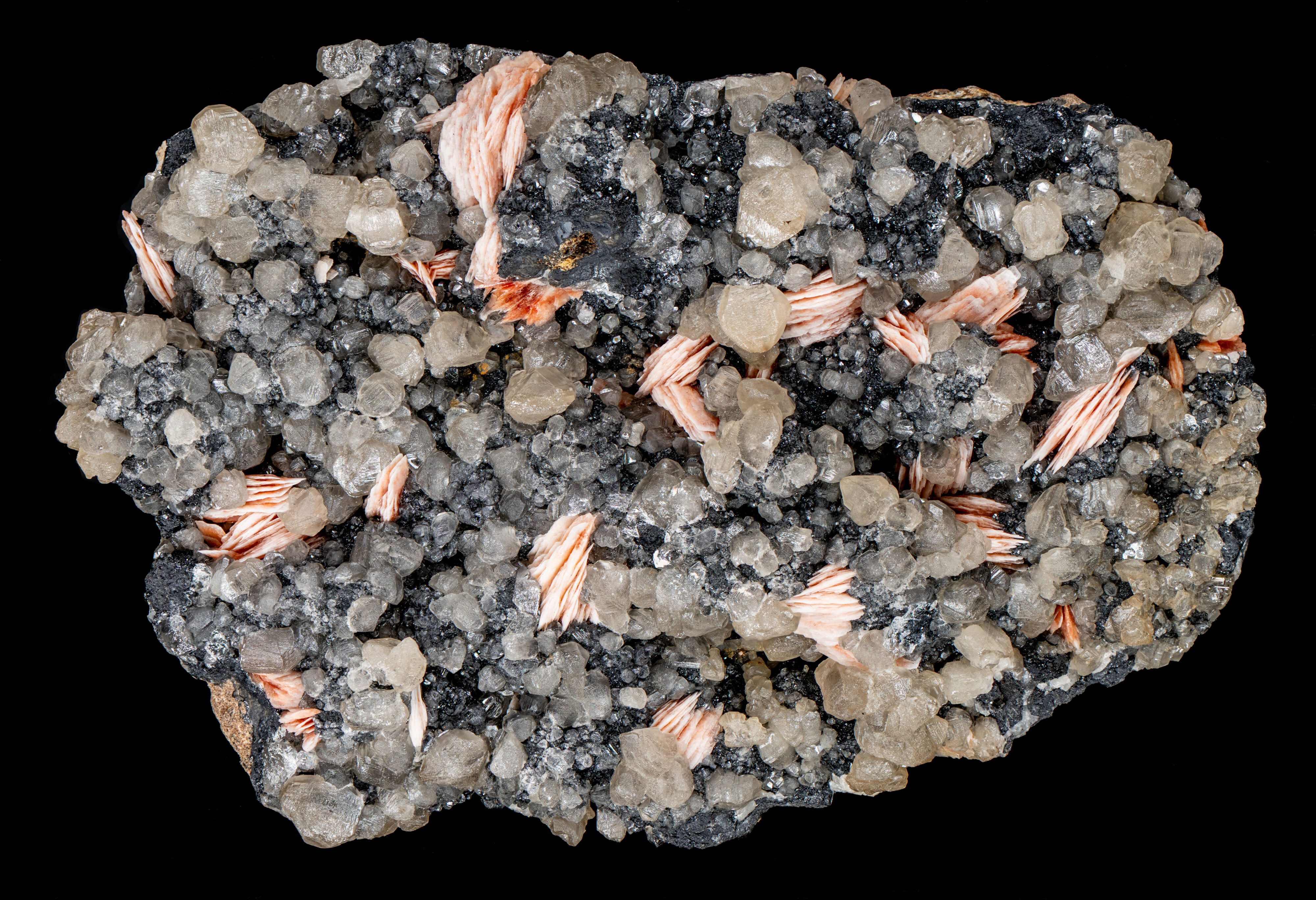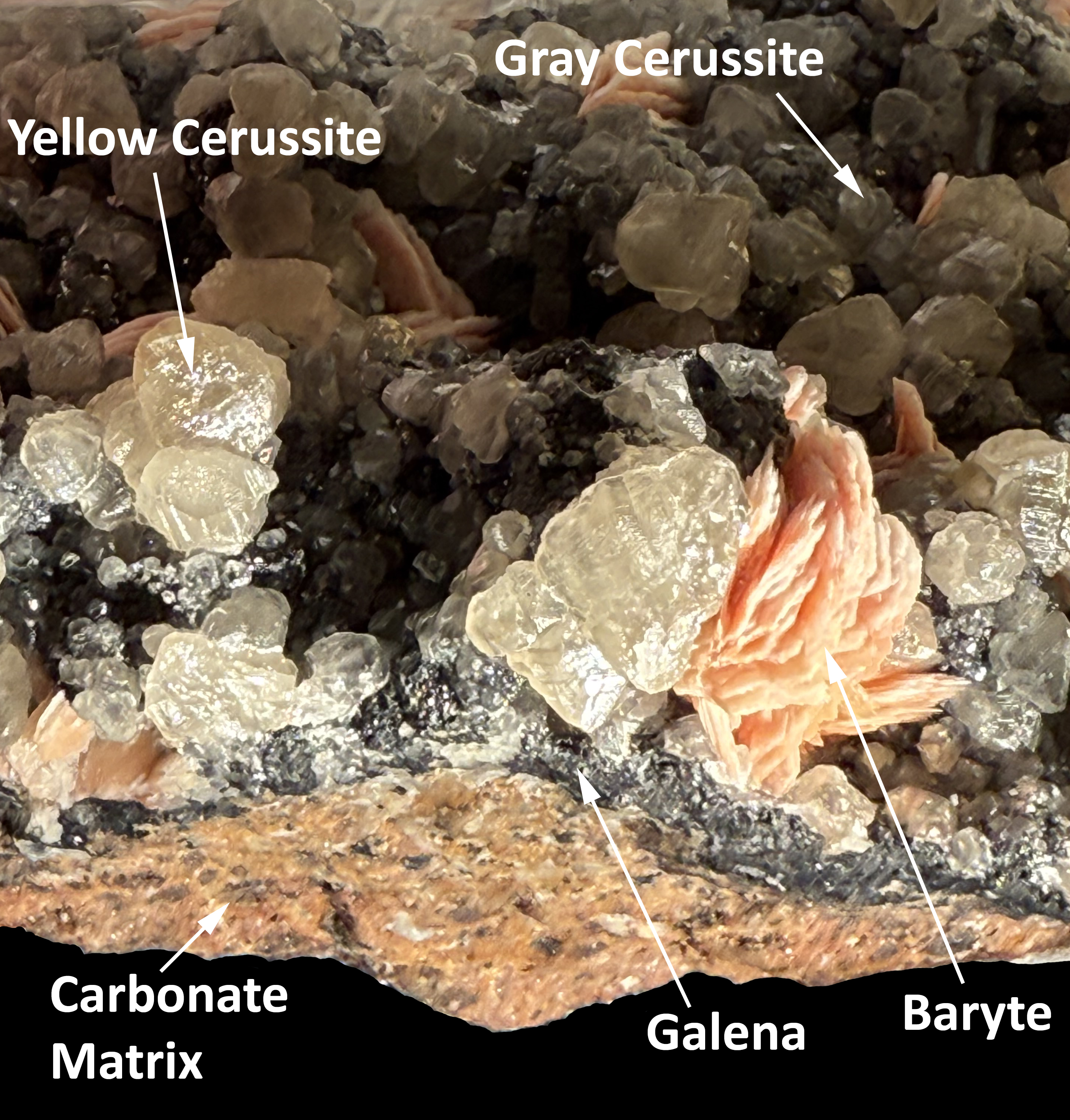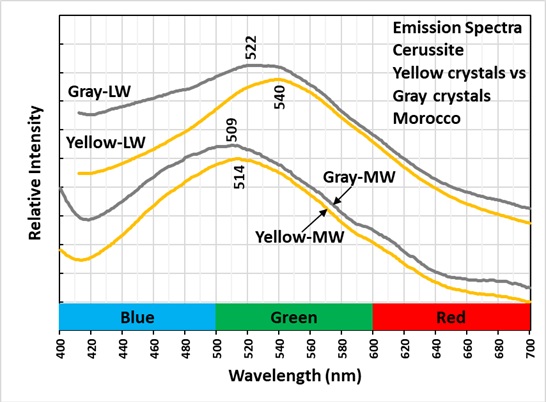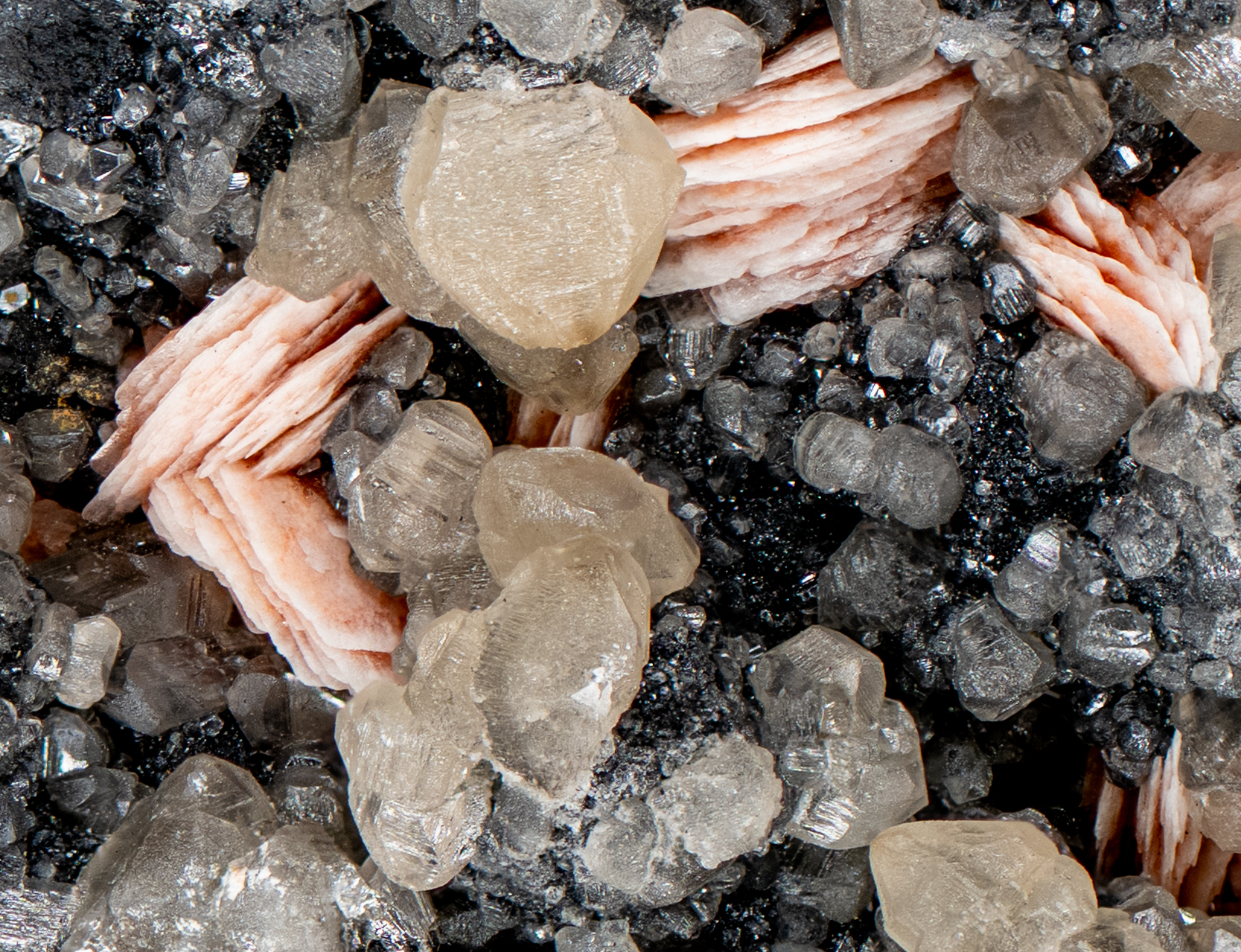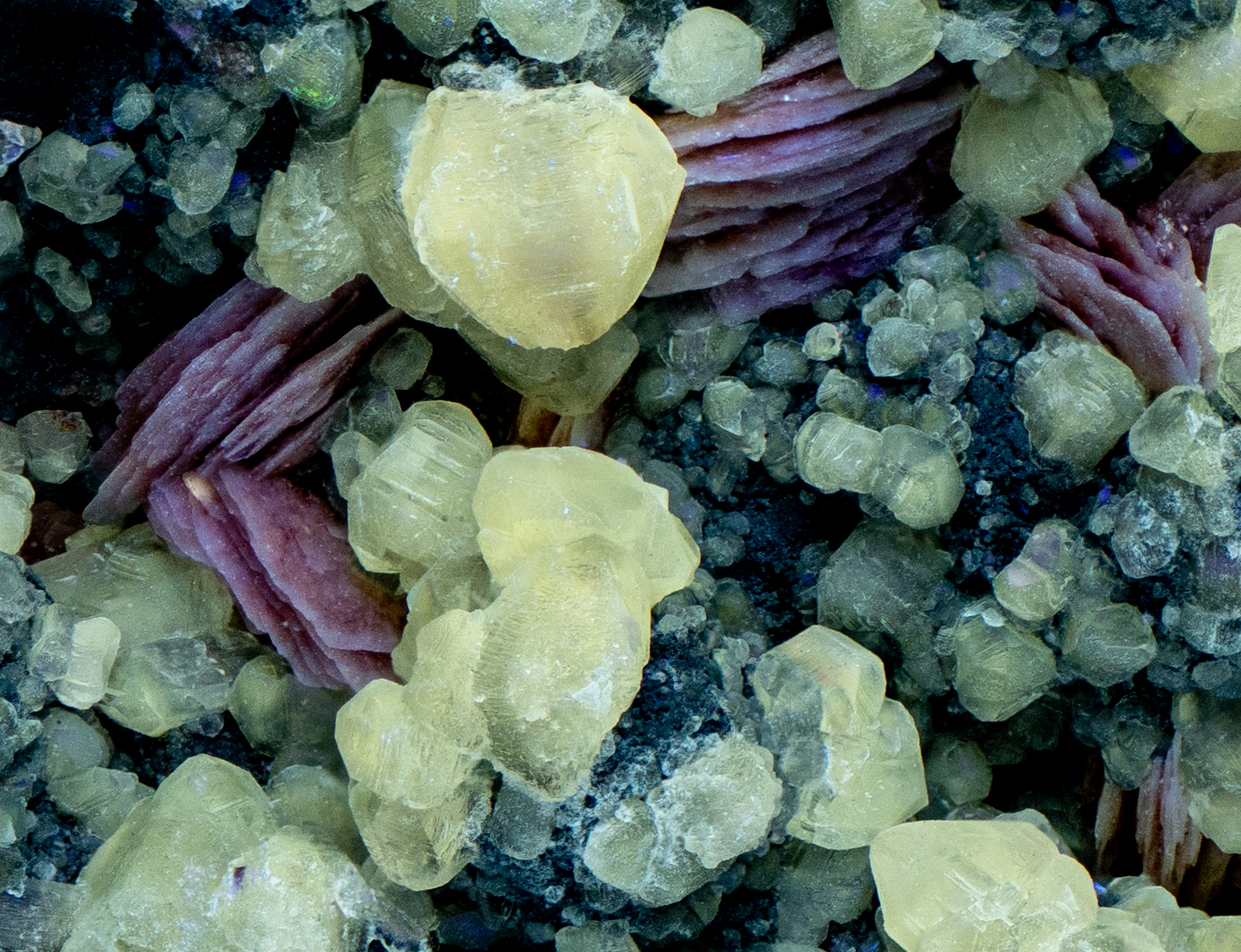Cerussite from Morocco
Contributed by: Michael Crawford
Date: Oct 12th, 2025
Locality: Mibladen, Aït Oufella Caïdat, Midelt Cercle, Midelt Province, Drâa-Tafilalet Region, Morocco (See on Mindat)
Size: 8 x 12 cm
Description:
Cerussite (PbCO3) and bladed salmon pink baryte (BaSO4) on galena (PbS) from Mibladen, Midelt Province, Morocco. The mineralization of the Mibladen ore deposit is hosted by Jurassic carbonates as well as conglomerates and sandstones. This specimen from Mibladen has a layer of galena crystals on a carbonate matrix. The galena is overlain by two generations of cerussite crystals and baryte. Cerussite is a secondary mineral formed from the oxidation of galena. The first generation of cerussite consists of gray translucent crystals that range in size from 2 mm to 4 mm. The second generation of cerussite has larger, yellowish gray crystals that are 4 mm to 10 mm in size.
Both generations of cerussite fluoresce bright yellow under longwave and midwave UV illumination. Their fluorescence is a very dim bluish gray under shortwave light. A long camera exposure is needed to capture the shortwave fluorescence. The greatest difference in fluorescence between the two generations of cerussite is best seen in the closeup image of shortwave fluorescence. The smaller first-generation crystals are gray and the larger second-generation crystals are pale yellow. The closeup shortwave image also shows the weak red fluorescence of the baryte blades.
The emission spectra show the two generations have slightly different signatures. The maxima of the emission peaks of the gray cerussite crystals occur at shorter wavelengths compared to the yellow crystals in both the longwave and midwave spectra.
Gray Yellow
Crystals Crystals
LW maximum 522 nm 540 nm
MW maximum 509 nm 514 nm
Also, the emission of gray crystals is brighter in the blue region under longwave and midwave light. The peaks of the longwave fluorescence of both cerussite generations are at longer wavelengths (more yellow) compared to the midwave peaks. Both midwave spectra show a sharp increase in intensity starting around 415 nm that increases into the ultraviolet to around 375 nm where it merges with reflected light from the 310 nm LED.
Some references attribute the yellow cerussite fluorescence being intrinsically caused by lead (Pb2+). However, cerussite from many other locations in non-fluorescent which rules out intrinsic activation. Either a chemical impurity or a crystal defect activates fluorescence. Recent research suggests interaction between lead ions and crystal defects activates the fluorescence. See discussion in https://www.mindat.org/mesg-596341.html
Summary of luminescence responses:
Cerussite (Mindat) (RRUFF)
- Fluorescence under Longwave (365nm LED) UV light: Yellow
- Fluorescence under Midwave (305nm LED) UV light: Yellow
- Fluorescence under Shortwave (255nm LED) UV light: Blue

